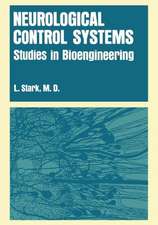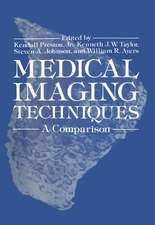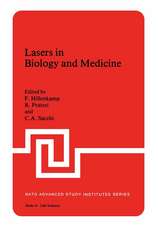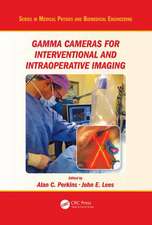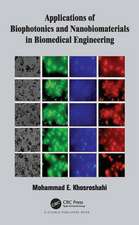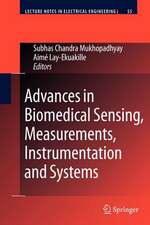Kenzan Method for Scaffold-Free Biofabrication
Editat de Koichi Nakayamaen Limba Engleză Paperback – 22 ian 2022
This is the first book about the “Kenzan” method for scaffold-free biofabrication, which does not rely on biomaterials as scaffolds to ensure correct multicellular spheroid positioning for building three dimensional construct only made from cells. The book explains the basic principles and concepts of the microneedle-based (“Kenzan”) method of building surgically-implantable tissue constructs using robotic cell spheroid-based three-dimensional bioprinting, a novel technology that opens up unique opportunities for the bioengineering of tissues and organs.
- First book on the novel Kenzan method of tissue engineering;
- Explains basic concepts and applications for organ regeneration modeling;
- Introduces a unique robotic system for scaffold-free cell construction.
| Toate formatele și edițiile | Preț | Express |
|---|---|---|
| Paperback (1) | 899.33 lei 6-8 săpt. | |
| Springer International Publishing – 22 ian 2022 | 899.33 lei 6-8 săpt. | |
| Hardback (1) | 906.26 lei 6-8 săpt. | |
| Springer International Publishing – 22 ian 2021 | 906.26 lei 6-8 săpt. |
Preț: 899.33 lei
Preț vechi: 946.66 lei
-5% Nou
Puncte Express: 1349
Preț estimativ în valută:
172.09€ • 184.02$ • 143.48£
172.09€ • 184.02$ • 143.48£
Carte tipărită la comandă
Livrare economică 17 aprilie-01 mai
Preluare comenzi: 021 569.72.76
Specificații
ISBN-13: 9783030586904
ISBN-10: 3030586901
Ilustrații: VIII, 184 p. 63 illus., 44 illus. in color.
Dimensiuni: 155 x 235 mm
Greutate: 0.28 kg
Ediția:1st ed. 2021
Editura: Springer International Publishing
Colecția Springer
Locul publicării:Cham, Switzerland
ISBN-10: 3030586901
Ilustrații: VIII, 184 p. 63 illus., 44 illus. in color.
Dimensiuni: 155 x 235 mm
Greutate: 0.28 kg
Ediția:1st ed. 2021
Editura: Springer International Publishing
Colecția Springer
Locul publicării:Cham, Switzerland
Cuprins
Introduction: The History of the Kenzan Method.- Basic Review of the Kenzan Method.-
Introduction of the Bio 3d Printer: The Robotic System.- Blood Vessels Project.- Liver.-
Articular Cartilage.- Trachea.- Peripheral Nerve.- Cardio Myocyte.- Diaphragm.- Bio 3d
Printed “Mini-Organ” for Drug Testing Tools
Notă biografică
Koichi Nakayama, MD, PhD, is Professor and Chairman at the Department of Regenerative Medicine and Biomedical Engineering, Faculty of Medicine, Saga University, Japan. He is also a Visiting Professor at the Medical Institute of Bioregulation, Kyushu University, Fukuoka, Japan. Dr. Nakayama is currently the president of the Cell Aggregation Meeting and also serves as a committee member for the Japanese Society for Regenerative Medicine. He received his MD from Kyushu University, Faculty of Medicine and his PhD from the Graduate School of the same institution. After specializing and working in orthopedic surgery at Fukuoka Red Cross hospital, National Hospital Organization Kyushu Medical Center, and the Department of Orthopedic Surgery of the Kyushu University Hospital, Nakayama went on to lead a project on bio-rapid prototyping funded by the Japan Science and Technology Agency (JST) at Kyushu University. This work led to the invention of a pioneering scaffold-free method for bio 3D printing, based on cell spheroids being deposited onto needle arrays at specific coordinates. In 2010 Nakayama co-founded Cyfuse Biomedical, where he currently is the scientific advisor. Together with Shibuya Kogyo, Cyfuse work on developing the bio 3D printer Regenova, as well as new biological products and solutions for drug testing and regenerative medicine. The company, together with Nakayama’s laboratory at Saga University and several Japanese and international partners are leading the way in scaffold-free bio 3D printed blood vessels, cartilage, liver, cardiac and neural tissues.
Textul de pe ultima copertă
This is the first book about the “Kenzan” method for scaffold-free biofabrication, which does not rely on biomaterials as scaffolds to ensure correct multicellular spheroid positioning for building three dimensional construct only made from cells. The book explains the basic principles and concepts of the microneedle-based (“Kenzan”) method of building surgically-implantable tissue constructs using robotic cell spheroid-based three-dimensional bioprinting, a novel technology that opens up unique opportunities for the bioengineering of tissues and organs.
- First book on the novel Kenzan method of tissue engineering;
- Explains basic concepts and applications for organ regeneration modeling;
- Introduces a unique robotic system for scaffold-free cell construction.
Caracteristici
First book on the novel Kenzan method of tissue engineering
Explains basic concepts and applications for organ regeneration modeling
Introduces a unique robotic system for scaffold-free cell construction
Explains basic concepts and applications for organ regeneration modeling
Introduces a unique robotic system for scaffold-free cell construction







